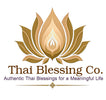The Meaning and Cultural Importance of Thai Amulets and Lucky Charms
Traditional Thai blessings and spiritual charms hold a special place in Thailand's rich culture. These blessings and charms are more than just pretty objects; they serve as symbols of protection, luck, and spiritual connection. For many Thais, these items are part of everyday life, influencing how people feel and interact with the world. This article explains the meaning behind these traditional Thai blessings and spiritual charms, revealing their deep cultural importance.
Understanding Traditional Thai Blessings and Spiritual Charms
Traditional Thai blessings and spiritual charms are objects or symbols believed to bring good fortune, shield their owners from harm, and connect them with spiritual power. They often include amulets inscribed with sacred symbols, lucky charms, or cloths adorned with protective designs. The purpose is simple: to invite positive energy and protection while warding off negative forces.
Many people in Thailand wear or carry these charms on a daily basis. Some see them as a source of confidence, trust in the unseen powers of the universe. These charms combine faith and tradition, reinforcing cultural values and spiritual beliefs.
The History of Thai Amulets
The history of Thai amulets stretches back centuries. These spiritual items began as simple talismans crafted by monks and healers. Over time, they evolved into elaborate objects linked closely to Buddhism and local folklore.
In earlier Thai society, amulets were often made to protect warriors in battle or to bring success in farming and business. As Buddhism spread, monks played a more prominent role in creating and blessing these amulets. Their spiritual power grew, and so did the respect for these charms.
Today, amulets remain valuable cultural artifacts. Collectors and believers treasure these pieces not only for their spiritual significance but also for their historical and artistic worth.
Types of Thai Lucky Charms
Thai lucky charms come in many forms, each with unique designs and meanings. Some of the most common types include:
Buddha Amulets
Buddha amulets feature images of the Buddha in various poses. These amulets symbolize peace, wisdom, and protection. Many believe that keeping a Buddha amulet close helps to cultivate inner calm and good karma.
Yantra Cloths
Yantra cloths, also known as “sai sin,” are pieces of fabric inscribed with sacred geometric patterns. Monks often bless these cloths during ceremonies. They are used to offer protection and can be hung in homes or worn.
Protective Talismans
Protective talismans might include items carved from wood, bone, or metal. Each talisman incorporates symbols meant to ward off evil spirits or bring luck in business, health, or travels.
Designs vary widely depending on the charm’s intended purpose and the tradition it comes from. Each piece reflects layers of cultural symbolism unique to Thailand.
Protective Charms in Thai Culture
Protective charms are deeply embedded in Thai daily life. Many people wear amulets or carry charms to feel safe from accidents, illnesses, or bad luck. Some place amulets inside their cars or homes as a form of spiritual insurance.
For example, a fisherman might carry a protective charm to guard against dangers at sea. A shopkeeper could display a lucky charm to attract customers and keep business booming. The use of these charms highlights a culture that embraces faith and spirituality as part of practical living.
Amulet Rituals and Ceremonies
Amulet rituals and ceremonies are important for activating the spiritual power within these objects. Monks often lead these rituals, chanting prayers and performing blessings. This process is believed to charge the amulet with sacred energy.
Buddhist blessings in Thailand play a key role during these ceremonies. The monks' involvement ensures the charm receives a spiritual connection that can protect and guide its owner.
These rituals may vary depending on the type of amulet and local traditions, but they all emphasize respect for sacred knowledge and spiritual power.
Comparing Different Spiritual Charms and Blessings
Though many spiritual charms share similar goals, differences in design and cultural meaning exist. Amulets are usually physical items worn or carried, while some blessings are more about the spoken word or rituals.
For example, a traditional blessing by a monk may offer protection without the need for a physical object. Meanwhile, lucky charms often focus on attracting fortune or love.
The effectiveness of these charms is deeply personal, tied to faith and cultural understanding. They serve as reminders of the spiritual world and its influence on everyday life.
How to Choose and Use Thai Spiritual Charms Wisely
Choosing the right charm means looking for authenticity and meaning. Seek charms from trusted sources or those blessed by well-known monks or temples. Genuine traditional Thai blessings and spiritual charms carry a history and energy that counterfeit pieces lack.
Respectful usage is also important. Treat charms with care, keep them clean, and avoid exposing them to disrespectful situations. Some believe amulets should be worn close to the body, while others should be kept in sacred spaces at home.
Maintaining your charms by occasionally cleansing them or attending local blessing ceremonies can keep their spiritual power strong.
Conclusion
Traditional Thai blessings and spiritual charms are powerful symbols of faith, protection, and cultural heritage. From their deep historical roots to their role in everyday life, these items show how spirituality and tradition intertwine in Thailand.
By understanding their meaning and importance, we can appreciate these charms beyond their physical beauty. Whether for protection, luck, or spiritual connection, Thai amulets and lucky charms remain treasured parts of a vibrant culture worth honoring and respecting.
Explore authentic Thai products at Thai Blessing Co to experience these blessings firsthand and bring a piece of Thailand's spiritual heritage into your life.

